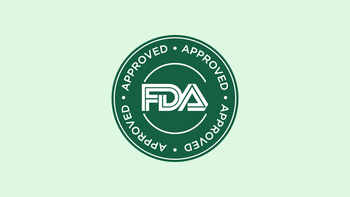
8 Nurtec ODT Interactions to Consider
Key takeaways:
Nurtec ODT (rimegepant) is a medication that treats and prevents migraines. You should avoid taking it with clarithromycin (Biaxin XL), ketoconazole, and ritonavir (Norvir). They can raise Nurtec ODT levels in the body and increase your risk of side effects.
Nurtec ODT interactions also include amiodarone (Nexterone, Pacerone), cyclosporine (Gengraf, Neoral), and grapefruit juice
Some medications, such as carbamazepine (Tegretol), and phenytoin (Dilantin), can make Nurtec ODT less effective. This is also the case with supplements that contain St. John’s wort. It’s best to avoid these combinations or talk to your prescriber about a different migraine medication.
In some cases, it’s OK to take Nurtec ODT with an interacting medication. You’ll just need to separate each dose of Nurtec ODT by at least 48 hours. Your prescriber should let you know if this applies to you.
Access savings on related medications
Table of contents

If you’re dealing with chronic migraines, medications such as Nurtec ODT (rimegepant) can be life-changing. You can take Nurtec ODT every other day to prevent migraines, or as needed to treat them when they occur. But no matter how you take it, Nurtec ODT has drug interactions that could impact its effectiveness or worsen side effects.
Here, we’ll review eight Nurtec ODT interactions you should know about. Other interactions are possible, so be sure to review your medication list with your healthcare team.
1. Certain antibiotics, such as clarithromycin
Certain antibiotics block an enzyme that breaks down Nurtec ODT in the body. This interaction can raise Nurtec ODT levels and increase your risk for side effects, such as nausea and stomach pain. Some antibiotics have a larger effect on Nurtec ODT levels than others.
Clarithromycin (Biaxin XL) is one antibiotic that can significantly increase Nurtec ODT levels. To be safe, it’s best to avoid taking clarithromycin and Nurtec ODT together.
Other antibiotics, such as erythromycin and ciprofloxacin, have a smaller effect on Nurtec ODT levels. It’s OK to take Nurtec ODT with these antibiotics. But if you do, it’s recommended you wait at least 48 hours between each dose of Nurtec ODT. This spacing helps prevent your medication levels from going too high.
If you need an antibiotic, tell your prescriber you’re taking Nurtec ODT. They may choose a treatment option that doesn’t interact with it. Or they may have you avoid or limit how often you take Nurtec ODT until you’ve finished your antibiotic.
2. Certain antifungals, such as ketoconazole
Certain antifungal medications can also interact with Nurtec ODT. Similar to antibiotics, they can raise the levels of Nurtec ODT in the body. And some antifungals are riskier than others.
Itraconazole (Sporanox) and ketoconazole have a stronger effect on Nurtec ODT levels. It’s best to avoid combining them with the migraine medication.
Fluconazole (Diflucan) and voriconazole (Vfend) don’t raise Nurtec ODT levels as much. So it’s fine to take them together as long as you wait 48 hours between each dose of Nurtec ODT.
What side effects can happen while taking Nurtec ODT? Here are common and rare Nurtec ODT side effects to consider and tips for how to manage them.
What’s the best way to take Nurtec ODT? Pharmacists review tips for taking Nurtec ODT.
Nurtec ODT alternatives: Nurtec ODT is one of many medications in its class. Read more about CGRP antagonists and how they differ from each other.
If you need treatment for a fungal infection, let your prescriber know you’re taking Nurtec ODT. They can let you know if you need to adjust your doses due to an interaction.
Good to know: Topical antifungals, such as Nizoral A-D shampoo or ketoconazole cream, don’t interact with Nurtec ODT. They don’t absorb into the body enough to cause an interaction. So it’s fine to combine these medications.
3. Ritonavir
Ritonavir (Norvir) is an antiviral medication that interacts with many medications. It’s part of some combination HIV medications, such as Kaletra (lopinavir / ritonavir). It’s also an ingredient in Paxlovid (nirmatrelvir / ritonavir), which treats COVID-19.
Ritonavir has a strong blocking effect on the enzyme that breaks down Nurtec ODT. As a result, it can raise Nurtec ODT levels in the body and lead to side effects. So it’s best to avoid taking these medications together.
For a short-term medication like Paxlovid, your prescriber may have you stop taking Nurtec ODT temporarily until your treatment is finished. But if you need to take a medication that contains ritonavir long term, you’ll likely need to stop taking Nurtec ODT. Your prescriber can recommend a safer option to prevent or treat your migraines.
4. Calcium channel blockers, such as diltiazem
Diltiazem (Cardizem) and verapamil (Verelan) are calcium channel blockers that can interact with Nurtec ODT. As with the medications listed above, they can raise Nurtec ODT levels in the body.
To help offset this risk, it’s recommended that you space Nurtec ODT doses at least 48 hours apart if you take these medications together. So you’ll likely need a different medication to prevent migraines if you take one of these calcium channel blockers.
5. Grapefruit juice
Grapefruit juice can interact with several medications, and Nurtec ODT is one of them. Like the previous medications, grapefruit and grapefruit juice can block an enzyme in your body, which leads to higher Nurtec ODT levels.
It’s best to avoid consuming grapefruit and grapefruit juice often or in large amounts while you’re taking Nurtec ODT. If grapefruit is a regular part of your diet, talk to your prescriber about a different migraine medication.
6. Some anti-seizure medications, such as carbamazepine
Carbamazepine (Tegretol), phenytoin (Dilantin), and phenobarbital are anti-seizure medications. These medications have the opposite effect of the previous Nurtec ODT interactions. They increase the activity of the enzyme that breaks down Nurtec ODT. So these medications can lower Nurtec ODT levels and make it less effective.
It’s best to avoid taking Nurtec ODT with these medications. Your prescriber will likely recommend a different migraine medication for you.
7. St. John’s wort
St. John’s wort is an herbal supplement. Since it’s sold over the counter, it’s easy to forget that St. John’s wort can interact with other medications. But it can lower Nurtec ODT levels and make it less effective.
It’s best to avoid St. John’s wort if you’re taking Nurtec ODT. Talk to your prescriber or pharmacist about a safer option. And don’t forget to check with your pharmacist about possible interactions before adding any other supplements to your routine.
8. Amiodarone and cyclosporine
Amiodarone (Nexterone, Pacerone) and cyclosporine (Gengraf, Neoral) can also interact with Nurtec ODT if they’re combined. They increase how much Nurtec ODT your body absorbs when you take it.
It’s OK to take these medications together, but you should wait at least 48 hours between each dose of Nurtec ODT. So you may need a different medication to prevent migraines if you’re taking amiodarone or cyclosporine.
Can you take Nurtec ODT with Tylenol or NSAIDs?
Yes. But you should talk to your prescriber about it first.
There are no interactions between Nurtec ODT and over-the-counter pain relievers, such as Tylenol (acetaminophen). It’s also safe to take nonsteroidal anti-inflammatory drugs (NSAIDs), such as naproxen (Aleve), with Nurtec ODT.
But in most cases, it’s best to try one medication and see if it works before adding another. So you shouldn’t take an OTC pain reliever with Nurtec ODT every time you get a migraine unless your prescriber tells you to. Taking OTC pain relievers too often can cause medication overuse headaches, also known as rebound headaches.
If you take Nurtec ODT to prevent migraines, you can safely take acetaminophen or NSAIDs as needed in most cases.
Can you take Nurtec ODT with Excedrin Migraine?
Excedrin Migraine contains acetaminophen, aspirin, and caffeine. As mentioned above, it’s fine to take Excedrine Migraine as needed if you’re taking Nurtec ODT to prevent migraines. But if you’re taking Nurtec ODT to treat an active migraine, check with your prescriber before combining the two treatments. Doing so could raise the risk of a rebound headache.
Can you take Nurtec ODT with other migraine medications?
Possibly, if your prescriber recommends it.
If you take Nurtec ODT regularly to prevent migraines, it’s safe to take a different type of medication if a migraine occurs. Common treatments include NSAIDs and triptans.
If Nurtec ODT is your rescue treatment when you get a migraine, you may take a different medication to help prevent them. Common options include topiramate (Topamax, Qudexy XR) and propranolol.
Nurtec ODT is a calcitonin gene-related peptide (CGRP) antagonist. In most cases, you shouldn’t take it with other oral CGRP antagonists (“gepants”), such as Ubrelvy (ubrogepant). There’s some evidence that taking one gepant for migraine prevention and a different gepant for migraine treatment may be OK. But you shouldn’t do this unless your prescriber tells you to.
Injectable CGRP antagonists are monoclonal antibodies that block CGRP in a different way than the oral gepants. Limited research suggests that combining these two types of medications may be effective, but more studies are underway to ensure it’s safe.
Everyone responds to migraine medications differently. So be sure to let your prescriber know if Nurtec ODT isn’t effective for you. They can add other medications or change your treatment if needed to improve or better manage your symptoms.
Frequently asked questions
There isn’t a direct interaction between alcohol and Nurtec ODT. But alcohol may worsen some Nurtec ODT side effects, such as nausea and stomach pain. Alcohol is also a common migraine trigger. So it’s a good idea to limit or avoid alcohol while taking Nurtec ODT. If you have concerns about your ability to cut back on alcohol, talk to your healthcare team for guidance.
Yes, in some cases Nurtec ODT may raise your blood pressure. But this isn’t a common side effect. High blood pressure typically occurs within 7 days (1 week) of starting Nurtec ODT. But it can happen at any time during treatment. Your prescriber will likely keep an eye on your blood pressure while you’re taking Nurtec ODT. Or they may have you check your blood pressure more often at home.
As with alcohol, there isn’t a direct interaction between caffeine and Nurtec ODT. But caffeine can be tricky when it comes to migraines. It can trigger migraines for some people, and frequent coffee drinkers are more likely to experience chronic migraines. But caffeine can also help treat migraines in some cases. The FDA recommends keeping caffeine intake to 400 mg or less (about 2 to 3 cups of coffee). If you normally consume more caffeine than what’s recommended, lower your caffeine intake gradually. Stopping caffeine suddenly can also trigger headaches for some people.
The bottom line
Nurtec ODT (rimegepant) is a medication that helps prevent or treat migraines. Serious Nurtec ODT interactions include clarithromycin (Biaxin XL), ketoconazole, and ritonavir (Norvir). These medications can raise Nurtec ODT levels in the body and should be avoided. Nurtec ODT interactions also include grapefruit juice, amiodarone (Nexterone, Pacerone), and cyclosporine (Gengraf, Neoral).
St. John’s wort and some anti-seizure medications can make Nurtec ODT less effective. You should avoid taking them together.
In some cases, you can still take Nurtec ODT with a medication it interacts with. You’ll just need to separate each dose of Nurtec ODT by at least 48 hours. Your prescriber should let you know if you need to do this based on your medication list. But be sure to let them know you’re taking Nurtec ODT if you’re starting a new medication.
Why trust our experts?



References
Carreras, E., et al. (2019). Table 31.1: CYP3A4 substrates, inhibitors and inducers commonly used in HSCT (non-limitative list). The EBMT Handbook: Hematopoietic Stem Cell Transplantation and Cellular Therapies. 7th Edition. Springer.
Dixon, D. M., et al. (1996). Antifungal agents. Medical Microbiology. 4th edition. University of Texas Medical Branch at Galveston.
DrugBank. (n.d.). Cytochrome P-450 CYP3A4 inducers (strong).
Loos, N. H. C., et al. (2022). The mechanism-based inactivation of CYP3A4 by ritonavir: What mechanism? International Journal of Molecular Sciences.
Petrarca, K. (2024). 15 frequently asked questions about CGRP monoclonal antibodies and gepants. Association of Migraine Disorders.
Pfizer Laboratories Div Pfizer. (2025). Nurtec ODT- rimegepant sulfate tablet, orally disintegrating [package insert].
Shah, T., et al. (2023). Calcitonin gene relating peptide inhibitors in combination for migraine treatment: A mini-review. Frontiers in Pain Research.
U.S. Food and Drug Administration. (2021). Grapefruit juice and some drugs don't mix.
U.S. Food and Drug Administration. (2024). Spilling the beans: How much caffeine is too much?
Was this page helpful?
Related Articles
Browse medications
View AllResearch prescriptions and over-the-counter medications from A to Z, compare drug prices, and start saving.



















